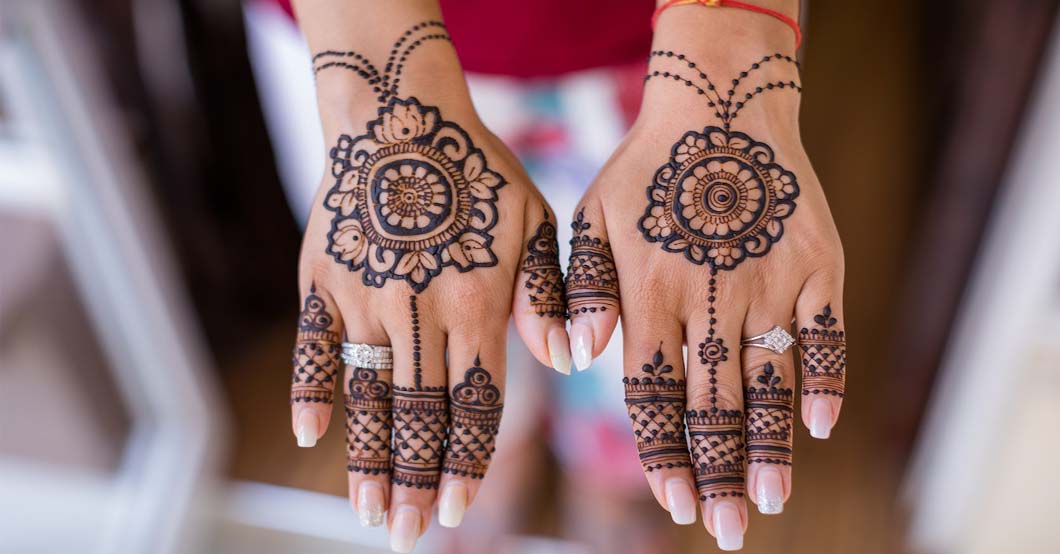Mehndi, also known as henna, is a traditional form of body art that has been practiced in various cultures for centuries. Finger mehndi designs, in particular, have become increasingly popular in recent years due to their intricate and beautiful patterns that adorn the fingers and hands.
Finger mehndi designs are a form of temporary tattoo that is created using a paste made from the dried leaves of the henna plant. The paste is applied to the skin in intricate patterns using a small cone or applicator and left to dry for several hours. Once the paste is removed, it leaves behind a beautiful, reddish-brown stain that can last for up to several weeks.
The popularity of finger mehndi designs can be attributed to several factors. Firstly, they are a form of body art that is temporary, allowing individuals to experiment with different designs and styles without the commitment of a permanent tattoo. Additionally, finger mehndi designs are often used for special occasions such as weddings, festivals, and other celebrations, adding a touch of glamour and elegance to the wearer’s overall look.
Types of Finger Mehndi Designs
Finger mehndi designs can range from simple and elegant to intricate and elaborate, depending on the preferences of the individual. Some of the most popular types of finger mehndi designs include:
- Floral Designs: These designs feature intricate patterns of flowers and leaves, often in a symmetrical arrangement. Floral designs are a popular choice for weddings and other formal occasions.
- Geometric Designs: These designs feature geometric shapes such as triangles, circles, and squares, arranged in intricate patterns. Geometric designs are often combined with other elements such as flowers and leaves to create a unique and eye-catching design.
- Arabic Designs: These designs feature intricate patterns of lines, dots, and curves, often with a floral or geometric motif. Arabic designs are known for their intricate and elaborate patterns and are a popular choice for weddings and other special occasions.
- Mandala Designs: These designs feature intricate patterns arranged around a central point, often with a circular or symmetrical pattern. Mandala designs are known for their spiritual and meditative qualities and are a popular choice for those seeking a more meaningful and personal design.
Tips for Creating Finger Mehndi Designs
Creating intricate finger mehndi designs can be a challenging task, but with some practice and patience, anyone can master the art of mehndi. Here are some tips for creating beautiful finger mehndi designs:
- Practice on Paper: Before applying mehndi to the skin, it is important to practice the design on paper. This will help you get a feel for the design and allow you to make any necessary adjustments before applying it to the skin.
- Start with Simple Designs: If you are new to mehndi, it is best to start with simple designs such as dots, lines, and basic shapes. As you gain more experience, you can move on to more intricate designs.
- Use Good Quality Mehndi Paste: The quality of the mehndi paste can have a significant impact on the final result. It is important to use good quality mehndi paste to ensure a rich and vibrant stain.
- Apply Mehndi to Clean, Dry Skin: Before applying mehndi, it is important to ensure that the skin is clean and dry. This will help the mehndi paste adhere to the skin and ensure a long-lasting stain.
- Be Patient: Mehndi takes time to dry and develop a rich stain. It is important to be patient and avoid smudging or rubbing the design before it is fully dry.
Conclusion:
Finger mehndi designs have become increasingly popular in recent years due to their intricate and beautiful patterns that adorn the fingers and hands. They are a form of temporary body art that is created using a paste made from the dried leaves of the henna plant and are often used for special occasions such as weddings, festivals, and other celebrations.


